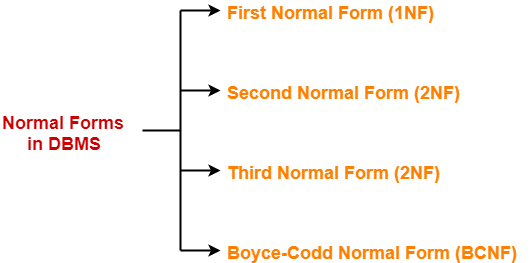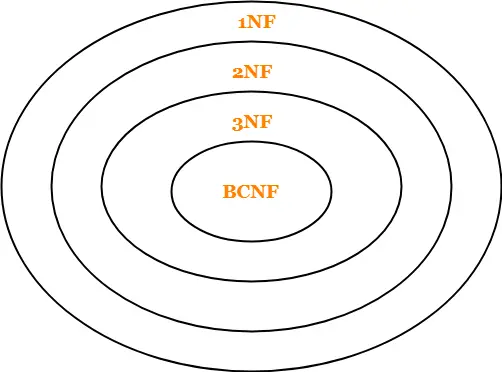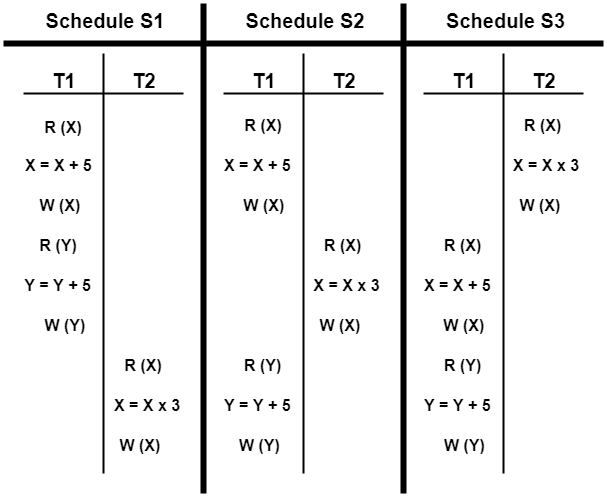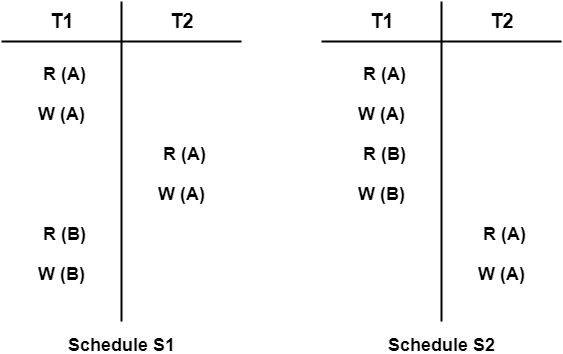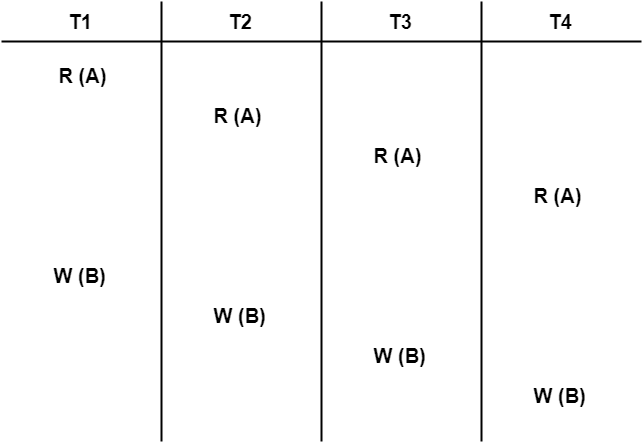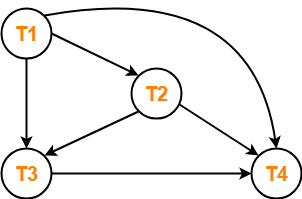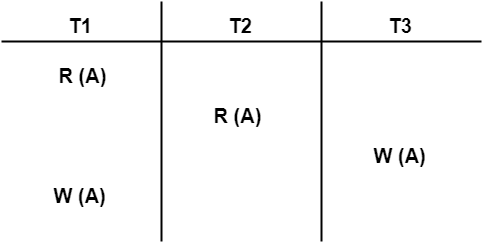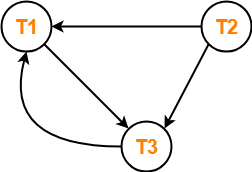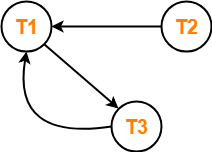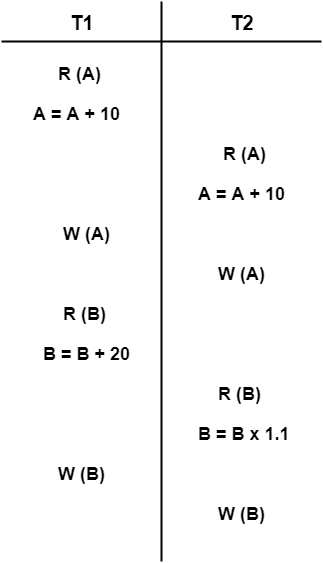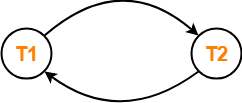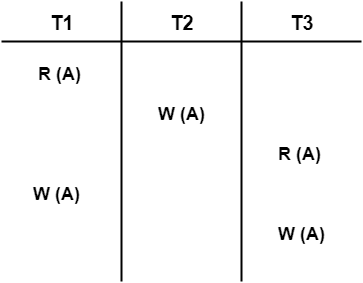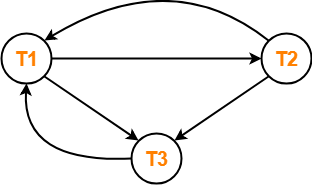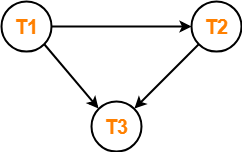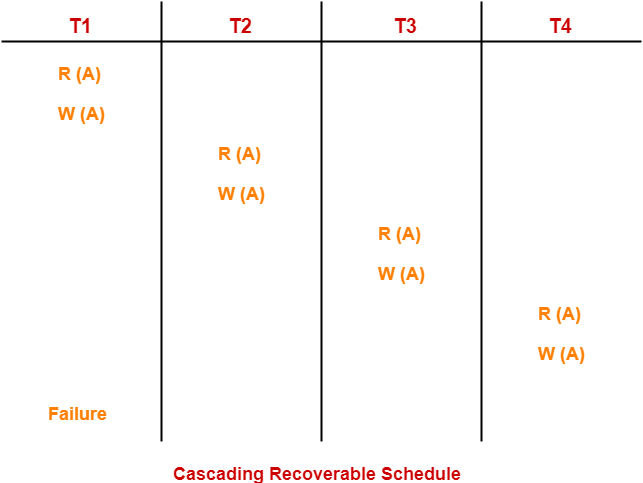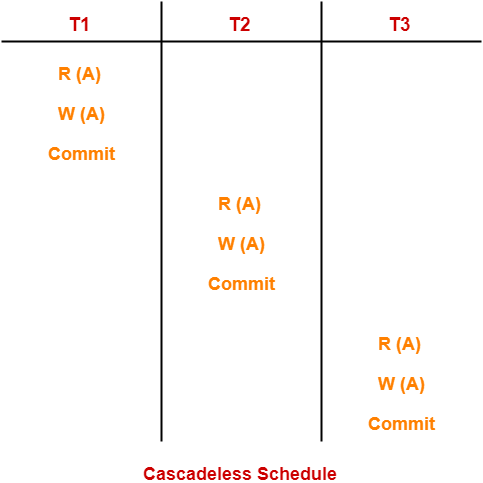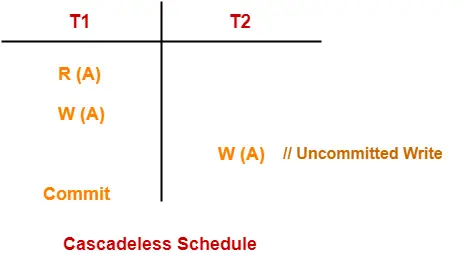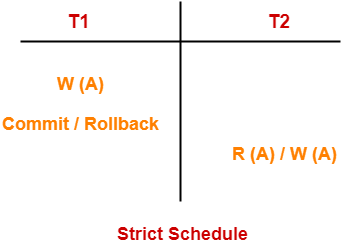Functional Dependency-
| In any relation, a functional dependency α → β holds if-
Two tuples having same value of attribute α also have same value for attribute β. |
Mathematically,
If α and β are the two sets of attributes in a relational table R where-
- α ⊆ R
- β ⊆ R
Then, for a functional dependency to exist from α to β,
If t1[α] = t2[α], then t1[β] = t2[β]
| α | β |
| t1[α] | t1[β] |
| t2[α] | t2[β] |
| ……. | ……. |
| fd : α → β |
Types Of Functional Dependencies-
There are two types of functional dependencies-

- Trivial Functional Dependencies
- Non-trivial Functional Dependencies
1. Trivial Functional Dependencies-
- A functional dependency X → Y is said to be trivial if and only if Y ⊆ X.
- Thus, if RHS of a functional dependency is a subset of LHS, then it is called as a trivial functional dependency.
Examples-
The examples of trivial functional dependencies are-
- AB → A
- AB → B
- AB → AB
2. Non-Trivial Functional Dependencies-
- A functional dependency X → Y is said to be non-trivial if and only if Y ⊄ X.
- Thus, if there exists at least one attribute in the RHS of a functional dependency that is not a part of LHS, then it is called as a non-trivial functional dependency.
Examples-
The examples of non-trivial functional dependencies are-
- AB → BC
- AB → CD
Inference Rules-
Reflexivity-
If B is a subset of A, then A → B always holds.
Transitivity-
If A → B and B → C, then A → C always holds.
Augmentation-
If A → B, then AC → BC always holds.
Decomposition-
If A → BC, then A → B and A → C always holds.
Composition-
If A → B and C → D, then AC → BD always holds.
Additive-
If A → B and A → C, then A → BC always holds.
Rules for Functional Dependency-
Rule-01:
A functional dependency X → Y will always hold if all the values of X are unique (different) irrespective of the values of Y.
Example-
Consider the following table-
| A | B | C | D | E |
| 5 | 4 | 3 | 2 | 2 |
| 8 | 5 | 3 | 2 | 1 |
| 1 | 9 | 3 | 3 | 5 |
| 4 | 7 | 3 | 3 | 8 |
The following functional dependencies will always hold since all the values of attribute ‘A’ are unique-
- A → B
- A → BC
- A → CD
- A → BCD
- A → DE
- A → BCDE
In general, we can say following functional dependency will always hold-
| A → Any combination of attributes A, B, C, D, E |
Similar will be the case for attributes B and E.
Rule-02:
A functional dependency X → Y will always hold if all the values of Y are same irrespective of the values of X.
Example-
Consider the following table-
| A | B | C | D | E |
| 5 | 4 | 3 | 2 | 2 |
| 8 | 5 | 3 | 2 | 1 |
| 1 | 9 | 3 | 3 | 5 |
| 4 | 7 | 3 | 3 | 8 |
The following functional dependencies will always hold since all the values of attribute ‘C’ are same-
- A → C
- AB → C
- ABDE → C
- DE → C
- AE → C
In general, we can say following functional dependency will always hold true-
| Any combination of attributes A, B, C, D, E → C |
Combining Rule-01 and Rule-02 we can say-
| In general, a functional dependency α → β always holds-
If either all values of α are unique or if all values of β are same or both. |
Rule-03:
For a functional dependency X → Y to hold, if two tuples in the table agree on the value of attribute X, then they must also agree on the value of attribute Y.
Rule-04:
For a functional dependency X → Y, violation will occur only when for two or more same values of X, the corresponding Y values are different.
Next Article- Equivalence of Functional Dependencies
Get more notes and other study material of Database Management System (DBMS).
Watch video lectures by visiting our YouTube channel LearnVidFun.
